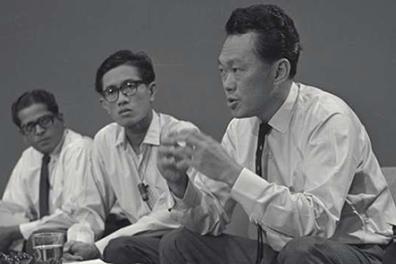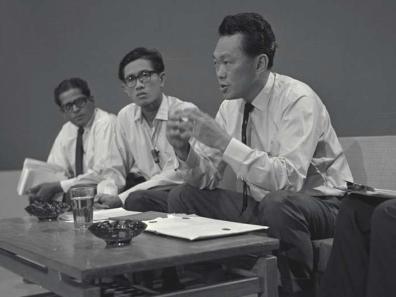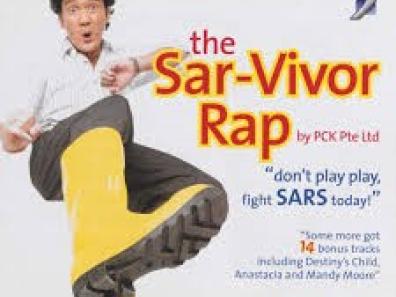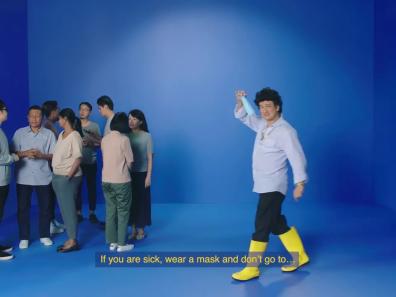Languages and social cohesion in Singapore: from independence to COVID-19

In August 1965, the city-island of Singapore found itself, somewhat unwillingly, propelled towards independence. The Prime Minister of the hitherto autonomous government, the charismatic Lee Kuan Yew, became its first leader. Tensions between Singapore and the rest of the Malaysian federation had arisen, in previous years, from disagreement over the Malaysian authorities' plan to pursue a policy of ethnic preference towards the Malays, the majority in the peninsula and socially relegated. Singapore's ruling People's Action Party (PAP), on the other hand, advocated a unified Malaysia, albeit Malaysian (i.e. with no Malay ethnic preference). In Singapore, three-quarters of the population were - and still are - of Chinese descent, which made this project of Malay racial preference unacceptable. These tensions and race riots prompted the Kuala Lumpur Parliament to vote on August 9, 1965 to exclude Singapore from the Federation.
The new rulers of the small republic, which was proclaimed in the process, then set about the difficult task of bringing independent Singapore to life. The task was immense, given the lack of natural resources and infrastructure. Lee Kuan Yew's very first survival objectives were to modernize the island, endow it with viable industry, a defense worthy of the name and international recognition. It was also a question of ensuring that famous societal cohesion, by striking a balance between the various ethnic groups: Chinese, Malays, Indians (mainly Tamils), Eurasians and others. A cohesion that he had been calling for in vain for the entire Federation of Malaya ever since Malaya (the former name of Malaysia) had gained independence from the British crown.
The new country, which was to become the first in the world to adopt the name of Malaysia, was to become the first in the world to adopt the name of Malaysia.

Cohesion through languages
The cohesion of Singaporean society therefore involved the high-speed development of a national education system, access to employment and the massive construction of social housing. But in this multicultural environment, the question of languages also had to be addressed. The republic thus opted for four official languages: English, the language of the colonizer, Chinese (known as Mandarin), Tamil and Malay, which was also granted the status of national language, enabling the young state to reassure both its own Malay community and its Malaysian neighbor.
One of Lee Kuan Yew's great ideas was to make Singapore a crossroads between East and West, and he supported the essentialist idea that its citizens should, while retaining their Asian-ness, rise to the level of the best in the West. Thus, English became the official language and the language of instruction up to university level (Chinese-language schools were gradually closed down), but every citizen was also required to learn the Asian language of his or her community, the so-called "Mother Tongue" (primarily Chinese, Malay and Tamil).
This policy, with mixed success, gradually but significantly changed the linguistic ecology of the city-state. The vast majority of Singapore's Chinese were speakers of languages originating in southern China (notably Hokkien, Cantonese, Teochew and Hakka), English or even a local form of Malay. At independence, less than 1% of residents spoke Mandarin. Their children and grandchildren therefore had to learn Mandarin at school. Other Chinese languages, still referred to by the government as "dialects", were banned from the public sphere, and particularly from the media. Hong Kong's Cantonese-language film and TV productions, for example, were systematically dubbed into Mandarin. A campaign to promote Mandarin, the 'Speak Mandarin Campaign' (SMC), was launched in 1979, initially to discourage citizens of Chinese origin from using dialects and to give preference to Mandarin. The government's explicit aim was also to leverage bilingual English/Mandarin skills as an asset in the globalization of the economy under construction.
Simultaneously with this policy of maintaining Asian languages, which only imperfectly reflected the reality of practices, the government remained attentive to ensuring that the entire population had access to an education in English. In Singapore, as in all multicultural and multilingual areas, whether colonized or not, human contact had the effect of transforming linguistic practices and adapting them to local realities. Even before colonization in 1819, the island's residents were already exchanging languages, which they hybridized according to their needs. This gave rise to market Malay (Melayu Pasar, or Baazar Malay) and, particularly with British colonization, to the popular Singapore language known as Singlish. This local, indigenized form of English still reflects the contacts of the people who speak it: an English-based grammar, a lexical contribution and some morphosyntactic features derived from Malay and Chinese languages, notably Hokkien. Highly flexible, these linguistic forms adapt to circumstances, evolve historically and constitute continuums situated at various points between a so-called standard English and a strongly hybridized speech.
Singlish: weight and controversy
One thing is certain: Singlish quickly became the language par excellence of Singaporean popular identity, to such an extent that in the country's armed forces, whose emblematic language is Malay, conscripts now use Singlish in their daily interactions mainly during their two years of military service, whereas the post-independence generation exchanged mainly in Hokkien[1]. With one of the aims of conscription being to create group cohesion and a sense of national identity, the government's concern about this kind of practice is understandable. Focusing on language as an instrument of social success and economic competitiveness, the government's attention was quickly drawn to what they saw as illegitimate linguistic practices, similar to the stance they had adopted with Chinese "dialects". In 2000, a new annual normative and prescriptive promotion campaign was launched for English, the 'Speak Good English Movement' (SGEM). The idea here was to promote the learning and practice of a standardized English, vaguely defined as conforming to a Singaporean standard, but in reality based on a British-inspired so-called international norm. From the outset, the campaign also aimed to devalue Singlish, reinforcing the image it already had, like most hybrid languages, of an incorrect and impure language. In its early years, the SGEM used posters and advertising slogans to promote standardized English as the only idiom capable of giving its speakers access to knowledge, international interaction and the job market.
At the same time, from 1997 to 2007, the Singaporean population was enjoying a 30-minute comedy TV show entitled Phua Chu Kang Pte Ltd, featuring an eccentric entrepreneur played by comedian Gurmit Singh, his wife and his professional entourage. The show's trademark, in addition to its situational comedy, was the form of Singlish spoken by Phua Chu Kang. Such was its success that Prime Minister Goh Chok Tong, Lee Kuan Yew's successor as head of government, repeatedly mentioned the character in his speeches, castigating - not without making his audience laugh - Phua Chu Kang's language, advising him to take an intensive English course, and even, the following year, to undergo tongue-repair surgery enabling him to better pronounce certain English consonants.
A voluntarist policy not devoid of paradoxes
This voluntarist policy of engineering linguistic diversity and standardizing the linguistic forms practiced on a daily basis does, however, present paradoxes at first glance. Indeed, Singapore's leaders quickly realized that, despite the decline of Chinese "dialects" in the city-state, the link to Asianity rested in part on the elders. However, one of the effects of the policy of Mandarinization of the Chinese population was to create not only breaks in the transmission of dialects, but also phenomena of interactional, and therefore relational, rupture, notably between grandparents and grandchildren, the former speaking only dialects and the latter only Mandarin and English. This disconnect has sometimes led to isolation among the older generation, and sometimes to forms of resistance on the part of social actors for the survival of these denigrated Chinese languages, which can be seen today in the creation of websites dedicated to these languages[2] , books or commercial products in these languages, and of course a high level of activity on social networks and platforms such as Youtube.
Meanwhile, the English rectification campaign's efforts turned away from a caricatured dichotomy between good and bad speaking, to accentuate the idea that English was important to the country's economic life and future. In a recent speech at a naturalization ceremony for Singaporean residents, Prime Minister Lee Hsien Loong admitted that social integration also depended on knowledge of Singlish. We can speculate that this implicit recognition merely marks the re-scaling of the language: from being a local, family language, denigrated by the state for many years, it has become the language of the community, of living together, alongside the other languages that have become the pillars of the national narrative. So to speak, the language of all, English, adopted by the first leaders, now shares this role with Singlish. Indeed, Singlish is the language of parity, the language of the interior, of the family, of humor, the language that everyone shares. The language of the outside world, that of the official institution, is English[3]. For several years now, Singlish has been the subject of a rather strong commodification (what some sociolinguists call 'commodification'), through the circulation of cultural products and commercial objects that not only promote it, but also place this language at the center of Singaporean identity.
Singapore's leaders seem to have taken all this on board, and have done so for a long time. Lee Kuan Yew, even before Singapore's independence, had gone to great lengths to learn his speeches in Hokkien. The sidelining of Chinese dialects and Singlish, as described above, should not obscure the fact that at every election campaign, these languages come to the fore and are largely instrumentalized by the government itself, which thus attracts the attention of older or more disadvantaged voters. For example, in 2014, the government drew up a policy to support pensions and social coverage (Pioneer Generation Package) for Singaporeans born before 1949. The program is being promoted with television commercials in the four official languages (English, Chinese, Malay and Tamil), as well as in those that normally have no access to the media space: Hokkien, Teochew and Cantonese. (see https://www.pioneers.sg/en-sg/Pages/View-Our-Media.aspx?language=Mandarin/Dialects)
During the SARS crisis in 2003, the same kind of system was put in place, with, in particular, high-profile clips - commissioned by the government itself - of Gurmit Singh, embodying his role as Phua Chu Kang and not hesitating to speak and rap like the character who made his success.

In 2020, the COVID-19 crisis prompted the Singaporean government to communicate quickly and massively to its population - young and old alike - in its various languages, Chinese dialects included, and to give the green light back to Gurmit Singh to once again don the garb of Singapore's favorite foreman and Singlish icon, Phua Chu Kang, thirteen years after his retirement.

See the videos at these addresses: https://www.youtube.com/watch?v=LFjZbDPc0tE
and https://www.youtube.com/watch?v=7ccjPJUROzA
Singaporean language policies, despite their sometimes paradoxical appearances, ultimately betray several fairly logical movements. Firstly, they have helped to write the narrative and shape the citizen of a new nation. Access to education for the whole of Singapore's population, increasing Westernization and the aging of the pioneer generation have raised questions about the rather strict language policy measures of the independence period, and a kind of "cultural" resistance has emerged. Finally, while we can observe forms of reflexivity on the part of the state, we can also hypothesize - and this is an area of research that remains to be explored - that the death in 2015 of Lee Kuan Yew, father of the nation, contributed to bending the stiffness of these language policy choices.
Gilles Forlot
Professor of Sociolinguistics, Inalco
Laboratoire SeDyL, UMR 8202 CNRS (http://sedyl.vjf.cnrs.fr/)
[1] A recent study by G. Forlot and D. Chan of 633 students at an elite Singaporean university shows that 98% of these young people understand Singlish, 92% speak it, and almost 70% speak it every day.
[2] See https://learndialect.sg/
[3] On this question and in another context, cf. Le Dû, J. and Y. Le Berre, 1996, "Parité et disparité : sphère publique et sphère privée de la parole", La Bretagne linguistique 10, pp. 7-25.
For more information:
- Alsagoff, L., 2010, "Hybridity in ways of speaking: the glocalization of English in Singapore", in Lim, L., Pakir, A. and Wee, L., English in Singapore. Modernity and Management, Hong Kong, Hong Kong University Press. pp. 109-130
- Chew, G.-L. P., 2013, A Sociolinguistic History of Early Identities in Singapore. From Colonialism to Nationalism, Basingstoke, Palgrave Macmillan.
- Brooks, A. and Wee, L., 2014, Consumption, Cities and States. Comparing Singapore with Asian and Western Cities, New York, Anthem Press.
- Chua, B. H. (1995). Communitarian Ideology and Democracy in Singapore. London: Routledge.
- Forlot, G., 2018, "Pratiques linguistiques et "multilinguisme pragmatique": 50 ans de glottopolitique à Singapour". Glottopol n° 30, pp. 34-62
- Lim, L., 2009, "Beyond fear and loathing in SG. The real mother tongues and languages policies in multilingual Singapore". AILA Review N° 23, pp. 52-71.
- Lim, L., 2015, "Coming of age, coming full circle: The (re)positioning of (Singapore) English and multilingualism in Singapore at 50", Asian Englishes Vol. 17, N° 3, pp. 261-270.
- Turnbull, C. M., 2009, A History of Modern Singapore 1819-2005. Singapore, NUS Press.
- Wee, L. 2003, "Linguistic instrumentalism in Singapore". Journal of Multilingual and Multicultural Development Vol. 24 No. 3, pp. 211-224.
- Wee, L., 2018. The Singlish Controversy. Cambridge, Cambridge University Press.